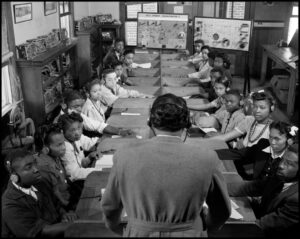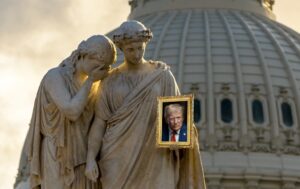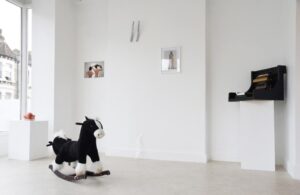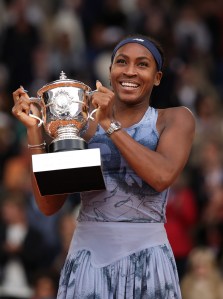Jim Shaw Peels Back American Pop Culture’s Facade
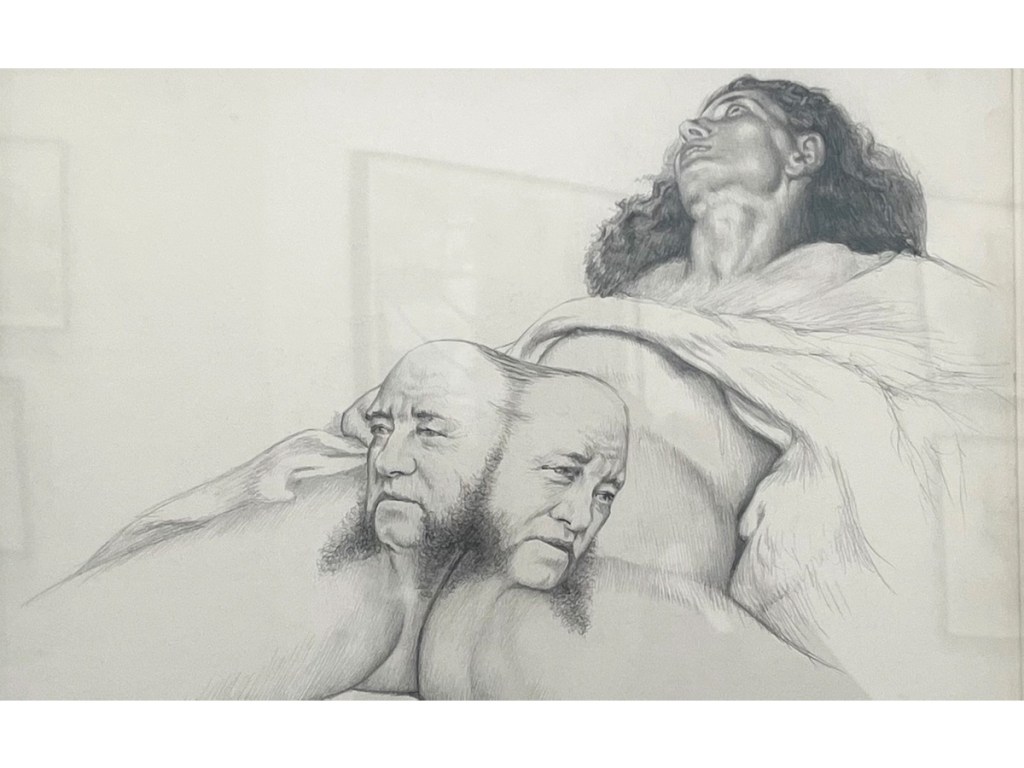


Jim Shaw seems to thrive on esoteric references and unlikely juxtapositions. In the 1990s, he began his ongoing Dream Drawings series and his Oism project, reflecting his long interest in world-building. With Drawings at Gagosian — a selection of meticulous black and white pencil drawings, plus two color works, dating from 2012 to 2025 — he continues to combine dreams, surrealism, and anachronous iconography into a distinctive visual language. Spend some time with the works, though, and the sum becomes more timely than the parts.
For more than 30 years, the LA-based artist has articulated the intertwined demons of US politics and mainstream culture, starting with the White suburban fantasies of the 1950s, and the deep-seated weirdness at the heart of both.

In “Study for ‘Dance, Girl, Dance (Lucille Ball)’” (2020), he presents viewers with an arresting portrait of an icon of American comedy. While the drawing alludes to the almost mesmeric appeal of Hollywood glamour in our culture, Shaw adds a dreamlike quality by overlaying a pattern of spots on the actress’s face. At the same time, Lucy’s piercing gaze and unsmiling expression — an unexpected portrayal of the I Love Lucy star — points to a darker, bewitched side of canonical pop culture.
Among a handful of Hollywood-themed drawings, “Study for ‘The Bridge’” (2020) also centers I Love Lucy, depicting the main cast in a car (a nod to a cross-country road trip episode) alongside the phrases “World’s largest standard of living” and “There’s no place like the American way,” above renderings of various loaves of bread.

Shaw’s vision of (here, literally) white-bread Americana permeates his works. Its foundation is the post-World War II moment when prosperity was represented through capitalism that was promoted by film and television, and White middle-class suburbia was posited as the ideal. Shaw’s critiques are unsettling, and more effective for it, because he mines the strangeness behind the facade. In “Study for ‘The Adding Machine’” (2023), a group of smiling faces surrounding a typing woman appear like a vision from a 1950s pamphlet in a cluster of gnarled trees. And in the surprisingly disturbing “Crouching Man With Little Figures” (2014), tiny clones seem to grow out of a nude man doing an athletic stretch.

Some of Shaw’s iconography might seem random at first, but the more you connect the dots, the more the insidious and, ultimately, catastrophic work of the US government, law enforcement, and military come to the fore. A 2023 Cultured article refers to the city where Shaw was born and raised as a “small town in Michigan,” but Midland is also the home of Dow Chemical, the company that pioneered plastic and foam products in the US and eventually became the sole provider of napalm and Agent Orange during the Vietnam War. The man in “Crouching Man With Little Figures” could easily be a byproduct of a chemical plant.
Other artists may speak to today’s sociopolitical issues more directly, but Shaw captures the maelstrom with uncanny precision.
Jim Shaw: Drawings continues at Gagosian (821 Park Avenue, Upper East Side, Manhattan) through June 14. The exhibition was organized by the gallery.
